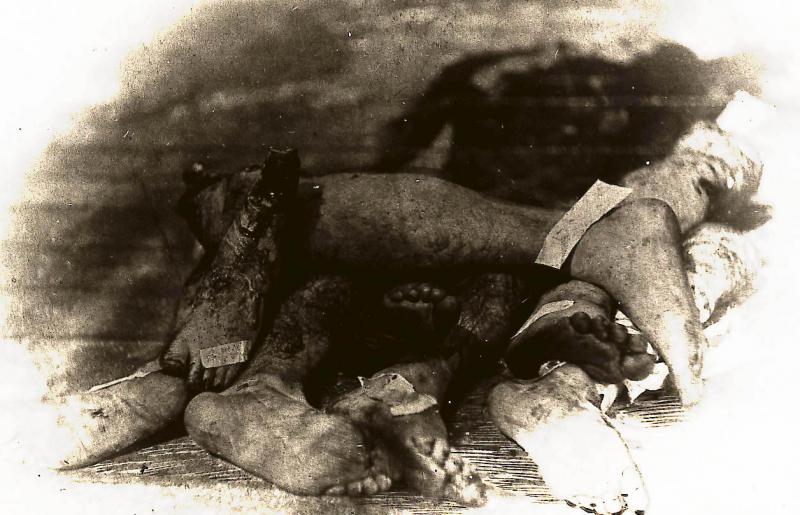Amputated limbs
*Content Warning: this photo shows graphic content that my be upsetting to some students*
Amputated legs and feet in a pile at a Civil War army hospital. About 60,000 surgeries were conducted during the American Civil War and about a quarter of them were amputations. The large number was in part due to the large number of wounded and the limited time to care for everyone, and newly minted doctors. Many of the doctors had never conducted a major operation or done dissection.
For more on amputations during the American Civil War go to:
http://www.pbs.org/mercy-street/uncover-history/behind-lens/surgery-civi...
https://www.nlm.nih.gov/exhibition/lifeandlimb/maimedmen.html
*Content Warning: this photo shows graphic content that my be upsetting to some students*

CP 1043 - Field Day. No date. Otis Historical Archives National Museum of Health and Medicine. Flickr. https://www.flickr.com/photos/22719239@N04/2364098348/ (Accessed December 7, 2018).
https://www.flickr.com/photos/22719239@N04/2364098348/
Public Domain
Public Domain is a copyright term that is often used when talking about copyright for creative works. Under U.S. copyright law, individual items that are in the public domain are items that are no longer protected by copyright law. This means that you do not need to request permission to re-use, re-publish or even change a copy of the item. Items enter the public domain under U.S. copyright law for a number of reasons: the original copyright may have expired; the item was created by the U.S. Federal Government or other governmental entity that views the things it creates as in the public domain; the work was never protected by copyright for some other reason related to how it was produced (for example, it was a speech that wasn't written down or recorded); or the work doesn't have enough originality to make it eligible for copyright protection.
Add a comment
PLEASE NOTE: NCpedia provides the comments feature as a way for viewers to engage with the resources. Comments are not published until reviewed by NCpedia editors at the State Library of NC, and the editors reserve the right to not publish any comment submitted that is considered inappropriate for this resource. NCpedia will not publish personal contact information in comments, questions, or responses. If you would like a reply by email, note that some email servers, such as public school accounts, are blocked from accepting messages from outside email servers or domains. If you prefer not to leave an email address, check back at your NCpedia comment for a reply. Please allow one business day for replies from NCpedia. Complete guidelines are available at https://ncpedia.org/about.